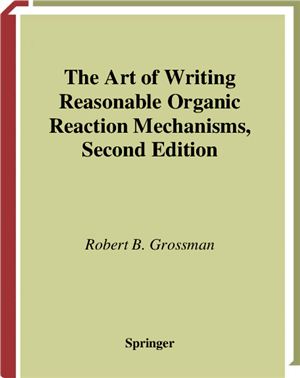2nd ed. Springer. 2003. 372 p.
Intended for students of intermediate organic chemistry, this text shows how to write a reasonable mechanism for an organic chemical transformation. The discussion is organized by types of mechanisms and the conditions under which the reaction is executed, rather than by the overall reaction as is the case in most textbooks. Each chapter discusses common mechanistic pathways and suggests practical tips for drawing them. Worked problems are included in the discussion of each mechanism, and "common error alerts" are scattered throughout the text to wa readers about pitfalls and misconceptions that bedevil students. Each chapter is capped by a large problem set.
Contents
The Basics
Polar Reactions under Basic Conditions
Polar Reactions Under Acidic Conditions
Pericyclic Reactions
Free-Radical Reactions
Transition-Metal-Mediated and -Catalyzed Reactions
Mixed-Mechanism Problems
A Final Word
Index
Intended for students of intermediate organic chemistry, this text shows how to write a reasonable mechanism for an organic chemical transformation. The discussion is organized by types of mechanisms and the conditions under which the reaction is executed, rather than by the overall reaction as is the case in most textbooks. Each chapter discusses common mechanistic pathways and suggests practical tips for drawing them. Worked problems are included in the discussion of each mechanism, and "common error alerts" are scattered throughout the text to wa readers about pitfalls and misconceptions that bedevil students. Each chapter is capped by a large problem set.
Contents
The Basics
Polar Reactions under Basic Conditions
Polar Reactions Under Acidic Conditions
Pericyclic Reactions
Free-Radical Reactions
Transition-Metal-Mediated and -Catalyzed Reactions
Mixed-Mechanism Problems
A Final Word
Index

